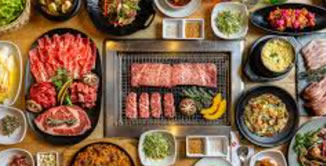

Easy Korean Recipes for Beginners: Start Cooking Korean Today
Embarking on a culinary journey through Korean cuisine offers a sensational experience, often rich in flavors and history. For those new to this vibrant food culture, starting with simple yet iconic dishes can provide both confidence and success in the kitchen. Here, we present several easy Korean recipes perfect for beginners, complete with straightforward cooking instructions to help you start cooking Korean today.
**Kimchi Fried Rice (Kimchi Bokkeumbap)**: This dish is a popular way to transform leftover rice and kimchi into a flavorful meal. Begin by heating a tablespoon of sesame oil in a pan, then add chopped kimchi and sauté for about two minutes. Add cooked rice, a spoonful of gochujang (Korean chili paste), and stir until the ingredients are well combined and heated through. Top with a fried egg and garnish with green onions for an extra touch of flavor. This dish offers a perfect balance of spicy and savory, making it an ideal introduction to Korean cuisine.
**Korean Pancakes (Pajeon)**: Simple and savory, these pancakes are packed with flavor and can be made with various ingredients. For a classic scallion pancake, mix together one cup of flour, one cup of water, and a pinch of salt to create a batter. Stir in sliced scallions and any extra vegetables you like. Heat oil in a skillet, pour in the batter, and cook until golden brown on both sides. Serve with a dipping sauce of soy sauce, vinegar, and sesame seeds. Pajeon is not only easy to make but also incredibly versatile, serving as an appetizer or a light meal.
**Japchae (Stir-Fried Glass Noodles)**: Often served on special occasions, Japchae can be prepared with ease at home. Start by soaking sweet potato glass noodles in hot water until soft. In a separate pan, stir-fry a mix of vegetables, such as spinach, carrots, and bell peppers, with soy sauce and sesame oil. Add the drained noodles, cook for a few more minutes, and toss with sesame seeds. This sweet and savory dish is packed with vegetables, making it healthy and satisfying.
**Bibimbap (Mixed Rice Bowl)**: A dish as beautiful as it is delicious, bibimbap can be easily customized with various toppings. Begin with a bowl of warm rice, and top with sautéed vegetables such as zucchini, carrots, and mushrooms. Add a fried egg and slices of cooked beef or tofu. Drizzle with sesame oil and a spoonful of gochujang, then mix everything together before eating. Bibimbap is a wonderful introduction to the vibrant flavors and textures of Korean cuisine.
**Korean BBQ Chicken (Dak Bulgogi)**: Marinating chicken in Korean spices creates a juicy and flavorful dish. Mix together soy sauce, ginger, garlic, sugar, and gochujang to create a marinade. Coat chicken pieces thoroughly and let them marinate for at least 30 minutes. Grill or pan-fry the chicken until cooked through and serve with steamed rice and lettuce wraps. This dish is a great way to enjoy the bold flavors of Korean BBQ at home.
**Kimbap (Korean Seaweed Rice Rolls)**: Easy to make and perfect for snacking, kimbap is often compared to sushi but features distinct ingredients. Begin by cooking rice and seasoning it with sesame oil and salt. Spread the rice over a sheet of seaweed, then layer with fillings such as cucumber, carrot, pickled radish, and cooked meat or eggs. Roll tightly, slice, and serve. Kimbap is a fun and creative way to explore Korean flavors, making it a fantastic dish for beginners to try.
By starting with these easy Korean recipes, beginners can build their confidence in the kitchen while exploring the diverse and rich world of Korean flavors. Each recipe provides a foundation in preparing Korean food, allowing enthusiasts to expand their culinary repertoire and enjoy the culture's beloved dishes.
